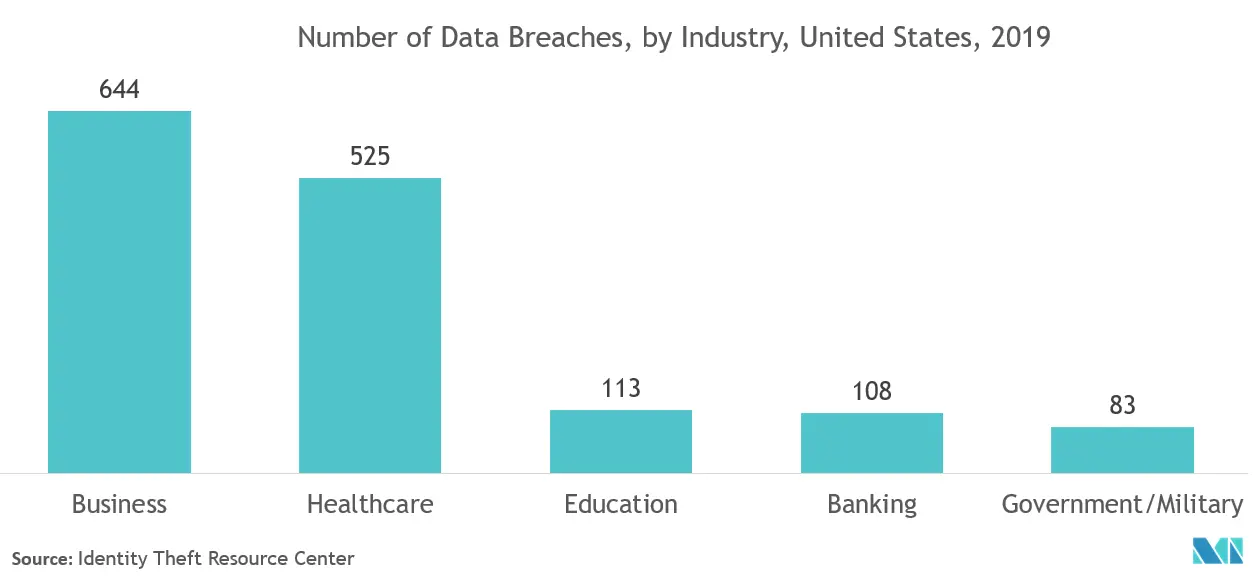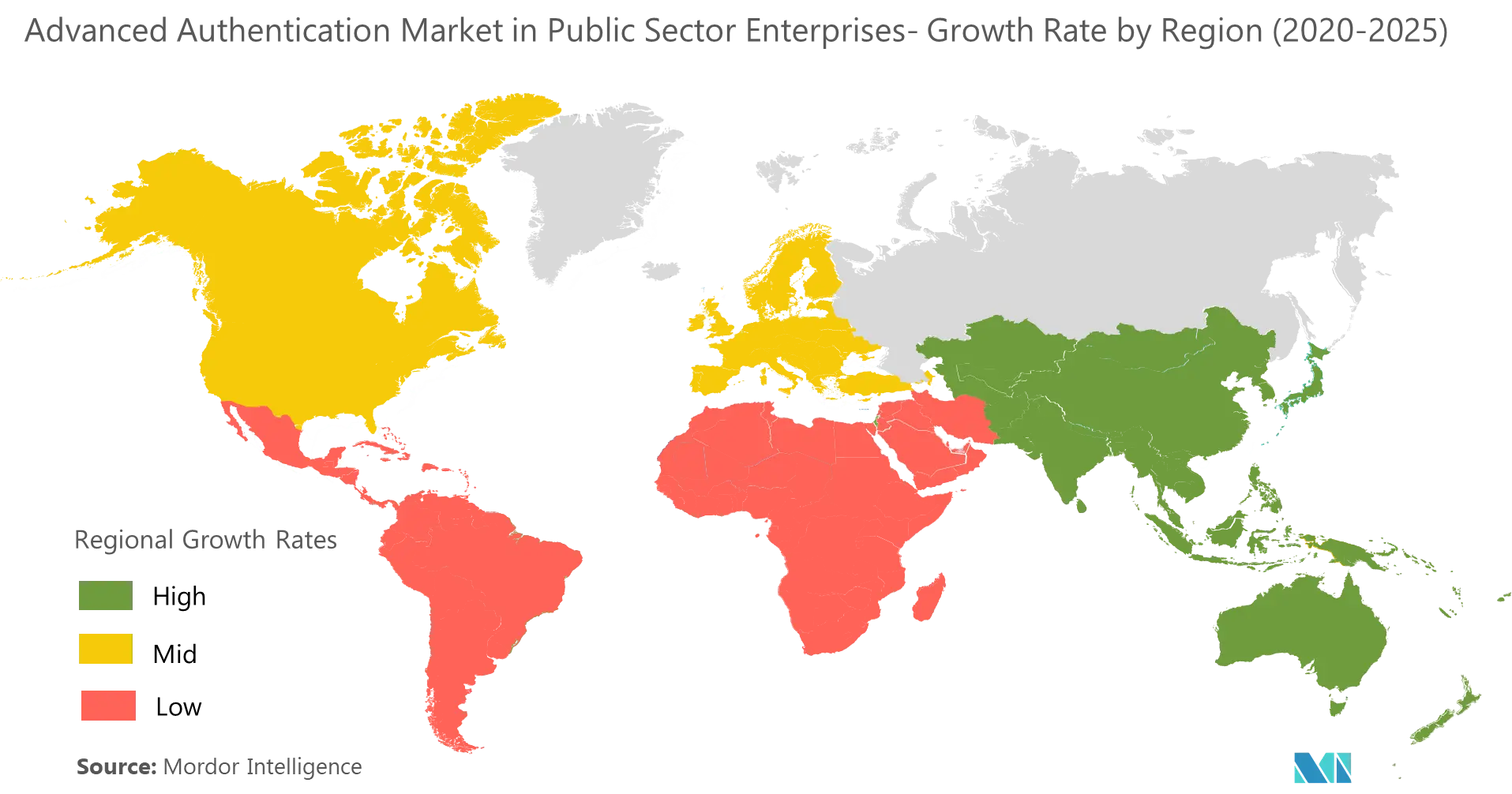Market Trends of Advanced Authentication Industry in Public Sector Enterprises
This section covers the major market trends shaping the Public Sector Enterprises Advanced Authentication Market according to our research experts:
Biometric is Expected to Hold Major Share
- With the increasing demand for cloud-based services, the authentication methods have increased significantly, where forms of MFA include a password combined with authentication apps, facial recognition, or fingerprint readers. Furthermore, the multifactor authentication market has received a significant push from the US government. The US defense also closed its USD 10 billion cloud contract in October 2019, where security is one of the critical parameters of the agreement, due to which multifactor authentication is going to play a vital role in the deployment of this project.
- Similarly, other enterprises have also been proactive in setting up new measures to prevent a data breach, which has resulted in more companies adopting multifactor authentication. For instance, in October 2019, the FBI warned about the vulnerabilities related to multifactor authentication. The FBI urged the public enterprises to integrate extra layers of biometric factors and behavior recognition checks to prevent hackers from efficiently bypassing multifactor authentication security systems.
- In the United Kingdom, in August 2019, Private biometric company Suprema supplies organizations including London’s Metropolitan Police and exposed a database that included more than one million fingerprints, user names, passwords, and facial recognition data. Suprema is the security company responsible for the web-based Biostar 2 biometrics lock system that allows centralized control. In July 2019, Suprema announced its Biostar 2 platform was integrated into another access control system – AEOS. AEOS is used by 5,700 organizations in 83 countries, including governments, banks, and the UK Metropolitan Police.
- The US federal government currently has an adoption rate of 93% of standard two-factor personal identity verification cards, according to a 2018 Office of Management and Budget analysis of cybersecurity across enterprises. Various new developments and innovations are being made to further secure multifactor authentication. For instance, in September 2019, BIO-key launched its biometric hardware and software authentication solutions that can fend off attackers and help ensure system protection. The company mentions its authentication solutions work unrestrictedly, with more than 30 fingerprint scanner models from different manufacturers.

North America is Expected to Hold Major Share
- Due to the recent development of the United States government, the North American region is expected to be a significant player in the market. On 28th January 2020, Federal CIO Suzette Kent mentioned that the U.S. government is implementing a zero-trust, and concepts, like advanced authentication through multifactor authentication, are crucial. Furthermore, the Ponemon Institute ranked public enterprises very low when it comes to monetary loss due to public hacking agencies. On 23rd January 2020, the U.S. government reported that at least five of the government's systems had malware planted by North Korea to access the vital information about the country. Instances like these would require the usage of robust advanced authentication systems in the region.
- The colossal data breach of government agency ever recorded was in 2015, when the data of 21.5 million people had swept away from the computers of government agencies in the United States. The U.S. government in 2019 reported that at least 98 attempts were made to hack the defense enterprises in 2019 alone. Further, SolarWinds' Federal Cybersecurity Survey, which covers the U.S. public sector, found that 52% of respondents identified foreign governments as the greatest threat, up from 34% five years ago. The hacking of government agencies has become primary propaganda too. For instance, on 5th January 2020, Iranian hackers hacked the government's Federal Depository Library Program's website, and the site was replaced by an anti-US message.
- Further, in the Defense sector, the demand for advanced authentication is significantly addressing market growth. The U.S. Air Force has collaborated with Defense Information Systems Agency (DISA) to test phone and tablet cases that leverage a mix of physical security, biometric authentication, and signal jamming to ensure personnel can extend mobility by using mobile phones during classified conversations in secure facilities. Among several projects involving biometrics, DISA (Defense Information Systems Agency) has also developed a prototype smartphone with numerous native biometric capabilities to support its "Assured Identity" concept for the U.S. military.
- In May 2020, as the COVID-19 pandemic continues to introduce new challenges to the Canadian financial services industry, VersaBank continues to respond efficiently and effectively. As it has since the beginning of the pandemic, the Bank continues to work to ensure the safety and wellness of its employees and clients, including maintaining to provide substantially all of the Bank's staff with a fully functional Workfrom-Home solution, which, as a function of the Bank's branchless, technology-driven model supported by its recently implemented two-factor authentication Virtual Private Network is enabling it to operate reasonably seamlessly with the highest level of security and without a material compromise to operational efficiency.


